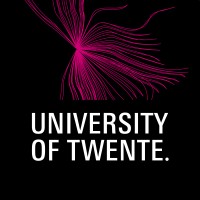
Jan Stegenga
Co-Owner at EVAbits- Claim this Profile
Click to upgrade to our gold package
for the full feature experience.
Topline Score


Bio


Experience
-
EVAbits
-
Netherlands
-
Appliances, Electrical, and Electronics Manufacturing
-
1 - 100 Employee
-
Co-Owner
-
Apr 2017 - Present
Bedum EVAbits is a complete engineering company that applies its know-how on all facets of product design and even production. As long as the product is electronics-based, EVAbits makes them smart, secure and robust.
-
-
-
Onethinx
-
Netherlands
-
IT Services and IT Consulting
-
1 - 100 Employee
-
Electrical Engineer
-
Aug 2018 - Apr 2019
Zwolle I developed a secure, locked-down, processing environment for the proprietary LoRaWAN stack to run in. The OTX-18 LoRaWAN module is the first to implement all the recommendations found in ARM's platform security architecture (PSA). It is based on a microcontroller with M0+ and M4 cores.
-
-
-
Normec Kalsbeek
-
Netherlands
-
Water, Waste, Steam, and Air Conditioning Services
-
1 - 100 Employee
-
Project Manager Telemetry
-
May 2017 - Jun 2018
Tynaarlo For Kalsbeek I developed a telemetry product that can greatly improve the way that Legionella Control is implemented. It is battery operated, wireless, and collects data in the cloud. I've worked on all aspects of the product, from technology and component selection, prototype assembly, via embedded and server-side programming, to pilot data analyses.
-
-
-
-
Head of Engineering
-
Aug 2012 - Dec 2016
Assen, The Nethjerlands Led a small engineering department (6 FTE at its maximum). The team developed several prototypes and products for (a.o.) radiation detection, audio acquisition, water quality monitoring, borehole, pipeline and mixing tank inspection. Developed a modular product line for M2M and LoRa communication for sensor systems, which included including energy management, processing and storage. Translated a model of the human cochlea to a real time implementation using the ZynQ platform and high level… Show more Led a small engineering department (6 FTE at its maximum). The team developed several prototypes and products for (a.o.) radiation detection, audio acquisition, water quality monitoring, borehole, pipeline and mixing tank inspection. Developed a modular product line for M2M and LoRa communication for sensor systems, which included including energy management, processing and storage. Translated a model of the human cochlea to a real time implementation using the ZynQ platform and high level synthesis (together with UT). Developed (on back end) spatio-temporal statistical adaptive filters to detect events in data originating from a water quality monitoring network. Acquired several engineering projects in the final year. Project leader of the 550k DistriSense project (EFRO). Supervised a PhD student shared with UMCG/RUG.
-
-
Industrial Researcher
-
Apr 2011 - Jul 2012
Assen, The Netherlands Supervised PhD students shared with University of Twente (robotics group) and UMCG/RUG (human movement sdience) and several Master and Bachelor students. Developed (real time) algorithms for a gamma radiation detection device. Organized seminars with both internal and external speakers. Acquired, analysed and reported on several proof-of-principle type of experiments conducted for customer companies. All-round signal analysis and classification.
-
-
-
University of Twente
-
Netherlands
-
Research Services
-
700 & Above Employee
-
Post-Doc; synchronized network activity in brain slices
-
Feb 2009 - Feb 2011
Enschede Area, Netherlands Deep Brain Stimulation (DBS) is a clinically used method to reduce the symptoms of Parkinson’s disease. It directly affects neuronal elements within the vicinity of the stimulus site (within the subthalamus nucleus, STN). However, indirect excitation or inhibition of connected structures may also play an important role in the therapeutic effect. My goal is to experimentally characterize the network dynamics of basal ganglia neurons (STN, GPe, GPi) in brain slices and/or cell cultures. In… Show more Deep Brain Stimulation (DBS) is a clinically used method to reduce the symptoms of Parkinson’s disease. It directly affects neuronal elements within the vicinity of the stimulus site (within the subthalamus nucleus, STN). However, indirect excitation or inhibition of connected structures may also play an important role in the therapeutic effect. My goal is to experimentally characterize the network dynamics of basal ganglia neurons (STN, GPe, GPi) in brain slices and/or cell cultures. In particular, the influence of network structure and its components on the generation of abnormal network activity seen in Parkinson’s disease and the influence of DBS are analyzed.
-
-
PhD student; Live learning neuronal networks, plasticity of bursts
-
2004 - Jan 2009
Investigations into synaptic plasticity have been done by measuring pairs of neurons in brain regions where the connections are known. Multi-electrode arrays are glass plates with a number of electrodes (typically 60) that allow the extracellular recording of action-potential activity of many neurons in parallel. Neuronal networks become spontaneously active after about one week, when synaptic connections have been made. The type of activity that dominates throughout the lifetime of cultures… Show more Investigations into synaptic plasticity have been done by measuring pairs of neurons in brain regions where the connections are known. Multi-electrode arrays are glass plates with a number of electrodes (typically 60) that allow the extracellular recording of action-potential activity of many neurons in parallel. Neuronal networks become spontaneously active after about one week, when synaptic connections have been made. The type of activity that dominates throughout the lifetime of cultures consists of short periods in which most neurons are active, separated by periods of very low activity by few neurons. This pattern is called bursting. I investigated the bursting phenomenon. We devised a new way analysing bursts and tested out analysis method with well-known and newly created electrical stimulation protocols.
-
-
Education
-
2000 - 2004

University of Twente
MSc, Electrical engineering -
1996 - 2000

NHL Hogeschool
BSc, Electrical engineering -
1993 - 1996

Bogerman College, Sneek
HAVO
Community










